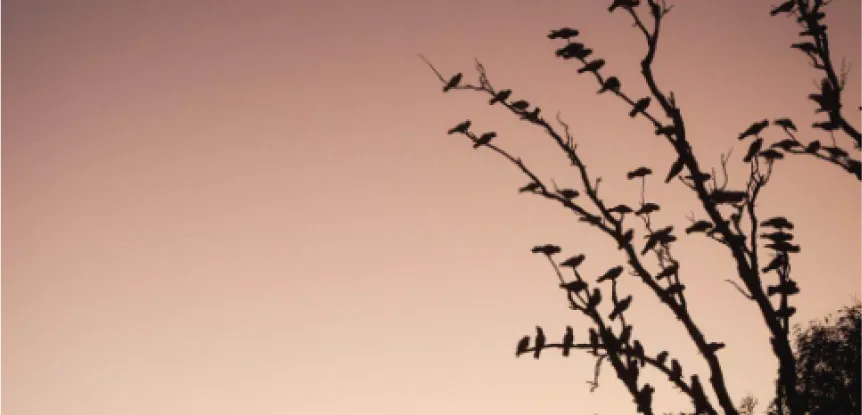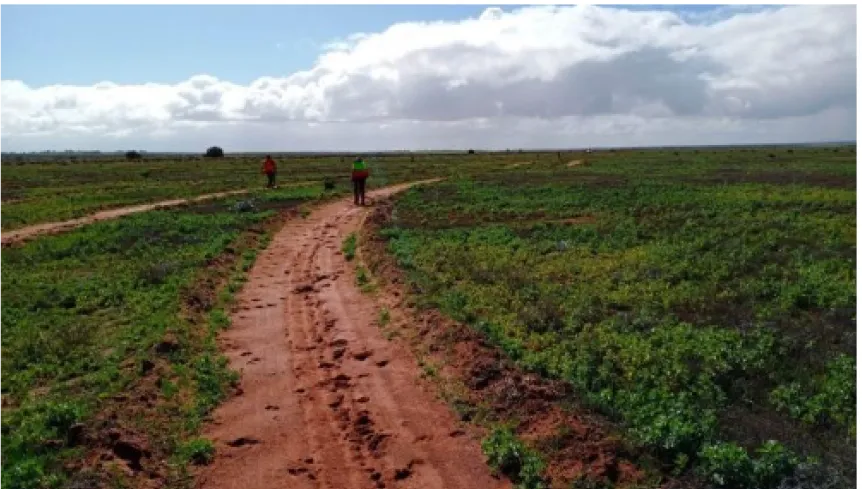
Project Location
Project Size
Permanence Period
Years
About the Project
Located in the WA Wheatbelt, CFF is using the Canna Carbon Project to develop, test and scale different carbon farming techniques and models.
We are trialing different approaches to carbon farming and making this public information for other farmers looking to undertake carbon projects.
The Canna Carbon Project is made up of three farms – Colganatta, Mulloncoola and Treelies. Tree planting began in 2016 on Colganatta, 2017 on Mulloncoola and then in 2018 for Treelies. A primary aspect of the planting design is adding native species to the remnant vegetation across the three farms, specifically at Colganatta & Mulloncoola.
The tree plantings were a combination of seedlings and direct seeding and were usually planted in late Autumn or Winter – in line with the area’s typical planting window.
Treelies features 8 different planting layouts, with a mixture of belt and block plantings and 40 different plant species that are native to the landscape to replicate remnant vegetation.
All seedlings and seeds were sourced from multiple nurseries and suppliers which specialised in the area’s endemic plant species.
Aims

The aim of the Canna Carbon Project is to revegetate the landscape, improve local biodiversity and show that carbon sequestration is possible in a low rainfall area.
The WA Wheatbelt is home to a range of native flora and fauna. The Canna Carbon Project aims to significantly improve the biodiversity in the area. We are doing this by:

Lessons Learned so Far
The Canna Carbon Project was an opportunity for us to explore whether a DIY carbon farming approach would be successful in a practical farm setting, specifically in a low-rainfall area. The project has provided us with key learnings that we can pass on to other landholders looking to start their carbon farming journey:
1. Have your ducks in a row to potentially plant early
Canna’s typical key planting window is June-August. However, in 2021, direct seeding needed to be brought forward to May due to wet weather. Planting early meant that there was a higher chance of germination and tree survival.
We learnt that it’s best practice to have your seeds and seedlings, as well as any necessary third-party contractors, lined up as early as possible. By being organised you can be more flexible with planting windows, increasing the chances of your trees surviving.
2. Make sure pest control is on your radar early
Rabbits & kangaroos eating our seedlings posed an issue for the tree survival. We learnt that it’s crucial to get on top of pest control early to mitigate it as a risk to your carbon project.
Measures you can take to help mitigate risks associated with pests include:
3. Make sure your planting design enhances survival whilst also being compliant with your registered methodology
There are always two key considerations during the project design stage. These are:
To better understand these considerations, we tested different planting designs and species mixes across the Treelies property. We found we had to be strategic about where we integrated belt vs. block planting configurations into the planting design, keeping in mind what would grow best in certain areas whilst also being compliant with methodology requirements.
Some tips we learnt that enhanced tree survival:
4. Be flexible with your weed management strategy & use of fertilisers
We learnt there is no one fits all approach for weed management and fertiliser use. For example, some weed management techniques and fertilisers had better results on different farms and had varying results year-on-year due to weather.
We found it’s better to be flexible regarding your fertiliser and weed management strategies as success can be dependent on specific seasons and landscapes.
5. Keeping your livestock separate from your tree planting areas
If you’re looking to undertake a tree carbon project as part of your existing livestock operation, make sure you have fenced off your planting areas so your livestock can’t get in (especially in the early establishment years). This is relevant if you’re looking at planting windbreaks and shelterbelts as part of your planting design.
We suggest always swinging past your planting areas as part of your routine farm check. That way if fencing gets damaged you can act quickly to mitigate the risk of livestock getting into the young plantings.
Project details
Number of properties
3
Planting configuration
Biodiverse block planting
How we helped
Planting coordination, compliance oversight, offset reporting, FullCAM carbon yield modelling

The Carbon Farming Foundation is no longer offering carbon project support services.
To read the full announcement, please click here: https://carbonfarming.org.au/cff-announces-services-closure/
If you need to reach the CFF team, please email admin@carbonfarming.org.au